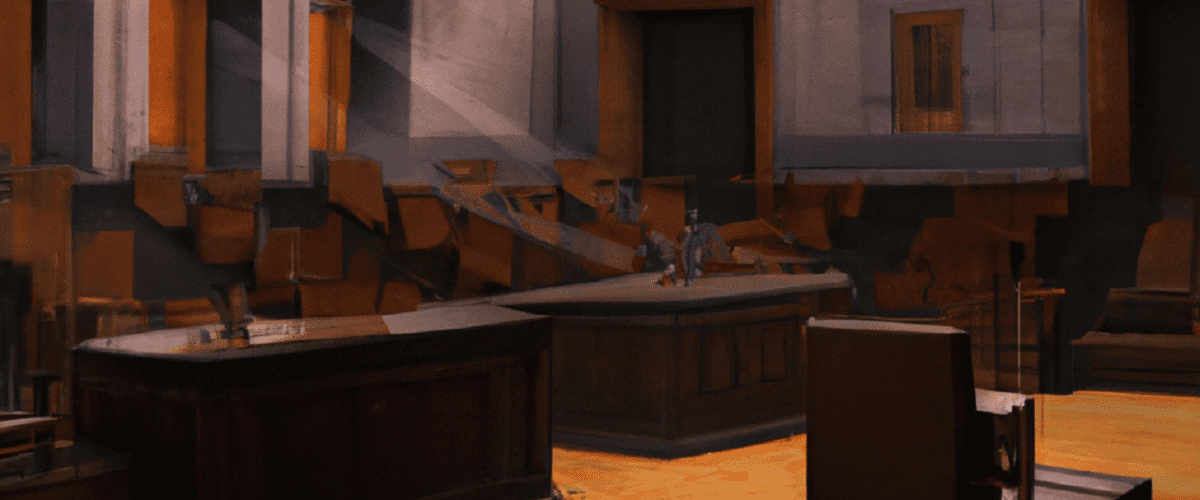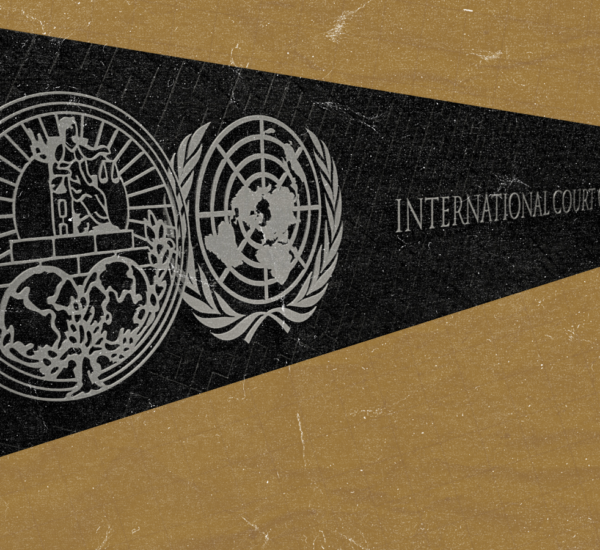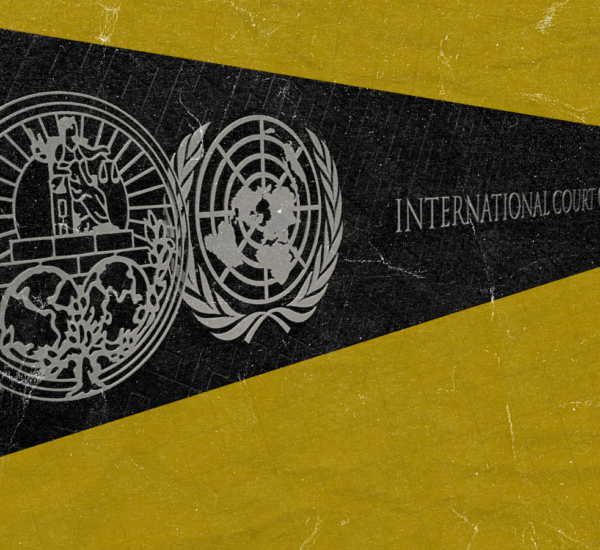
Stuti Rai
The Indian court system adopts an adversarial model, where the State prosecutes an accused person. The actual adjudication in an adversarial system largely precedes on the presumption that the State and the accused are on equal footing in their fight to bring out the judicial truth, with the occasional aid provided by the judge. However, the underlying reality remains that the prosecution is backed by an omnipotent sovereign. This is then, the political reality in which we seek to zealously guard our fundamental rights through legal machinations that include procedural safeguards for accused persons, so as to counter the might of the State.
Ordinarily seen as a simple code laying down the procedures to be followed prior to, during, and after a criminal trial, one often misses the fact that the Code of Criminal Procedure, 1973 [‘CrPC’] is also a charter of the civil liberties and rights of an accused person. The enactment of special legislations that seek to escape the purview of the CrPC, is an attempt at the erosion of these liberties.
This article seeks to demonstrate how one of the core rights afforded to an undertrial, i.e., the right to not be a witness against oneself under Article 20(3) of the Constitution, is diluted through interpretations afforded to §313 of the CrPC by the judiciary. To this end, the article is divided into three parts that address the following: (1) the scheme of §313 of the CrPC and its interpretations; (2) the interaction between §313 of the CrPC and Article 20(3); and (3) jurisprudential concerns that have arisen from the misutilisation of §313.
- Scheme of S 313
- 313 of the CrPC empowers the court to put questions to the accused. The objective is to secure a fair trial and an opportunity of hearing for the accused. The underlying principle is that one should not be condemned unheard, and to satisfy the requirement of audi alteram partem.
Under §313(1)(b), the court is mandated to put questions regarding incriminating circumstances to the accused. This duty is to be exercised irrespective of whether the accused wishes to explain the circumstances, and the strength of the prosecution’s case. The questions must be simple, clear, and capable of being answered directly. On the other hand, the accused is merely mandated to personally appear before the court for his examination. Where personal attendance is burdensome, they must respond by way of a signed affidavit. The call of the court cannot be ignored by the accused.
In that sense, therefore, the accused has a right to be given an opportunity to explain the circumstances being put against him by the prosecution, and the CrPC casts a duty on the court to afford this opportunity to the accused. Indian criminal adjudication has two crucial features, highlighted above: first, it is adversarial, and therefore, advocate-driven; and second, the prosecution is run by the State. Naturally, then, when the liberty of a person is brought down to the strength of their advocate against the might of the omnipotent State, the CrPC carves out the power for the judge to personally engage with the accused. However, because no oath is administered to the accused, any statements, denials, or silence from the accused cannot be treated as evidence under the Indian Evidence Act. The statements, however, may be used to appreciate the evidence put forth by both the parties. The proceedings under §313 therefore, are most certainly not in the nature of an inquiry, or intended to relieve the burden of the prosecution by forcing the accused to admit the circumstances, if they are unable to explain the same.
Concerningly, however, the duty to answer the call of the court has been fashioned into a duty to provide an explanation, by the Supreme Court (‘SC’). It is now well-accepted that courts may draw adverse inferences if the accused remains silent or supplies false explanations on facts which are subsequently held to be established or proved (see Ramnaresh v. State of Chhattisgarh). While this does not establish a duty per se, the connotations attached to silence/explanations imply that the accused must answer the court’s questions. Consequently, in another case, the SC has held that it is indeed obligatory for the accused to explain the incriminating circumstances (see Munish Mubar v. State of Haryana).
It is the fashioning of what was originally a right arising out of the principles of natural justice into an obligation upon the accused, that is examined in the rest of this article.
2. Interaction between Article 20(3) and §313
The right to silence is a principle of common law, understood to mean that courts should not conclude the guilt of a person merely on the basis of his failure to answer questions put to him. In the Indian context, the right to silence is derived from Article 20(3) of the Constitution.
Article 20(3) protects an accused from being compelled to testify against himself. In other words, it provides a right of silence to the accused. This right to be silent extends to questions, even outside of courtroom proceedings, which tend to self-incriminate a person. This includes any admissions by an accused which increase the probability of guilt of a person, even if they do not reach the standard of a confession. Further, in Nandini Satpathy v. PL Dani, it was held that even if a person faces the threat of prosecution in relation to a different criminal proceeding than the one in which they are being questioned, they may validly exercise their right to be silent and refuse to answer such questions.
To illustrate: A is accused of having committed a theft on the night of May 10 in Allahabad, and in truth, he was committing a theft in Lucknow on the concerned night. When questioned about his alibi for the night of May 10, A has the right to remain silent as truthfully answering the question exposes him to prosecution for the theft in Lucknow.
Coming back to §313, the element of compulsion is introduced in §313 when judges use the stick of adverse inferences to draw out explanations from the accused. This compels the accused to speak lest inferences are drawn against him possibly leading to conviction, thereby prejudicing the right to be silent. To buttress this argument, this section discusses first, the history and scheme of the CrPC, while locating §313 within the same; and second, the public policy underlying Article 20(3) and §313.
(a) Legislative History and Scheme of CrPC
The provisions of the CrPC generally militate against state-induced compulsions even at the stage of trial, so as to operationalise and guarantee the protection under Article 20(3). Consider §161(2), which prevents a person from being compelled to answer questions that would expose them to a criminal charge during questioning by police. The protection further continues in §315(1)(b), by providing that the refusal of the accused to appear as a witness or lead evidence shall not give rise to any presumption against him nor be made the subject of any comment. Quite naturally then, §313(3) explicitly protects the accused against punishment for silence or giving false answers. This is also why no oath is administered to the accused before a §313 statement is recorded.
The legislative history of the present CrPC lends credence to this. The CrPC of 1898 had a comparable provision in its §342(2), which additionally allowed the court to draw inferences from the silence of the accused. This aspect was specifically excluded by the legislature in the new CrPC of 1973 while preserving the remainder of the section, undoubtedly in reinforcement of Article 20(3).
(b) Public Policy underlying Article 20(3) and §313
Ordinarily, law strives towards the discernment of truth through regulated means. Yet, in certain spaces, a deliberate decision has been made by the state to privilege human dignity above the search for the objective truth. For example, confessions made pursuant to torture or to police officers are inadmissible, though they may be true. In cases of dowry death and rape, when foundational facts are proved, the court is mandated to presume the guilt of the accused person – again, irrespective of the truth. Similarly, the voice of the accused is protected at the cost of truth by Article 20(3). This protection is intertwined with the accused’s rights to life, privacy, and dignity, intended inter alia to protect the accused from torture and other encroachments upon bodily integrity. The right to silence has further been recognised as being foundational to human dignity and expressive freedom.
Under the garb of securing the truth, the courts of India have been misutilising §313 to elicit self-incriminations, in the nature of confessions. A confessional statement under Section 164 of the CrPC is an incriminating statement made by the accused to a Magistrate. Such confessions are admissible only when untainted by fear, under §24 of Indian Evidence Act (‘IEA’). Their veracity and reliability is secured procedurally, through means such as the safeguards of judicial custody, medical check ups, mandatory duty of the court to ascertain threats and fears plaguing the accused, and provision of legal representation. Gross failure in abiding by these procedures renders the confessions unreliable (see Dara Singh v. Republic of India). Likewise, the drawing of adverse inferences is a limited discretion awarded to courts through §114 of IEA. It allows a court to draw an inference against the concerned party, such inference not arising from any established facts or evidence but by virtue of the operation of law in very specific circumstances. Both confessions and adverse inferences are regulated through evidentiary and procedural standards, none of which apply to the silence/statements of the accused under §313.
On the other hand, even if one were to privilege truth as an overriding objective of the criminal law, the very absence of mechanisms such as oath administration and the availability of the right of cross-examination, nullifies the possibility of unearthing the so-called truth.
In view of this background and the legislative scheme of the CrPC, the natural and defensible conclusion is that §313 examination is part of the accused’s right to hearing and is not in the nature of an inquiry. The refusal to exercise this right or the manner of exercising this right should not lead to adverse consequences for the accused. To do so otherwise would not only interfere with the dignity and expressive freedom of the accused, but also the fairness of trial.
3. Jurisprudential Concerns
Silence or false explanations have proven pernicious for an accused. Vigilant courts, time and again, have sought to institute safeguards by providing that adverse inferences do not become a substitute for proof (Shankerlal Gyarasilal Versus State of Maharashtra, Tanviben Pankajkumar Divetia v. State of Gujarat). An adverse inference from silence or false explanations is allowed only if the facts of the prosecution case stand fully established. Here, ‘fully established’ simply means that the circumstances alleged by the prosecution must be proved beyond reasonable doubt, without any gaps or broken links. The weaknesses in the defence of the accused cannot substitute the duty of the prosecution. This is because the statements of the accused do not constitute evidence in and of themselves, as they are not made under oath (Raj Kumar Singh v. State of Rajasthan). Thus, any silences or explanations can, therefore, merely be used to lend credibility to the prosecution case (Mohan Singh v. Prem Singh).
However, various judgments of the SC appear to have established a sliding scale, with cases on the other side of the spectrum adopting standards that are quite contradictory. For instance, the SC in Mani Kumar Thapa v. State of Sikkim used silences and false explanations of the accused, and inferences therefrom, as a missing link to complete the chain of circumstances against the accused and condoned the passing of consequential orders against the accused for false explanations. In such cases, conjectures often substitute reasoned inferences. Naturally, then, it is much less surprising when another bench of the SC holds that the denials of established facts by the accused under Section 313, may be treated as incriminating evidence against them (Munna Kumar Upadhyaya v. State of Andhra Pradesh).
At this stage, a distinction between false explanations and silence must be addressed. Prima facie, it appears that while silence of an accused may be protected, within the scheme of the CrPC, false explanations should not be treated on the same level. A false statement, it may be argued, is acceptable fodder for drawing adverse inferences against the accused. However, I argue that false explanations are the unfortunate corollary of the near-compelled testimony that is extracted from an accused under §313. Until and unless the right of silence of the accused is safeguarded and entrenched into the procedures of criminal administration, any false explanation provided by the accused must be presumed to be driven by fear, panic, or ignorance. The effect of panic on an innocent person has long been recognised by the SC even in relation to far more incriminating conduct on the part of an accused. For instance, the mere fact of absconding by an accused does not lead to the inference of guilt, as even an innocent person may become panic-stricken and try to evade arrest (Matru v. State of UP, State v. Mahender Singh Dahiya, and Sk Yusuf v. State of WB).
It may be useful yet again to invoke the comparison with a confession to understand this better. The very value of a confession resides in the fact that there exists no compulsion upon an accused to make the confession, and in fact, it is the duty of the Magistrate to actively investigate any possibility of the same having been compelled. Any other statement (including 313 statements) made by the accused post arrest, with regard to which compulsion is not thoroughly investigated and ruled out and where the threat of adverse inference from silence looms large, also necessitates the presumption that it is a compelled testimony.
The jurisprudence is, then, not only internally contradictory, but violative of accepted legal standards, including that statements under §313 do not constitute evidence.
The treatment of the statements of the accused as a link in the chain of circumstances further jeopardiaes the presumption of innocence (itself a human right and fundamental to dispensation of justice), as succinctly explained by Sopinka J of the Supreme Court of Canada:
“If silence may be used against the accused in establishing guilt, part of the burden of proof has shifted to the accused. In a situation where the accused exercises his or her right to silence at trial, the Crown need only prove the case to some point short of beyond a reasonable doubt, and the failure to testify takes it over the threshold. The presumption of innocence, however, indicates that it is not incumbent on the accused to present any evidence at all, rather it is for the Crown to prove him or her guilty.”
Within the present jurisprudential framework, the practical effect of silence or false explanations supplied by the accused under §313 is that it may be used adversely against the accused. At minimum, the court will draw adverse inferences which lend credence to the existing prosecution case. However, in my opinion, and for the reasons argued above, this practice violates Article 20(3) of the Constitution and the right to presumption of innocence.
Conclusion
The right to presumed innocence has not been given the status of a fundamental right in the Indian legal system. Yet, its status as a universal human right, crucial to the fairness of criminal trials, has been widely recognised in democratic legal systems. As Ronald Dworkin has stated, the presumption of innocence is the fundamental right of an innocent person not to be convicted. This presumption is justified for the principled fact that a criminal trial jeopardises individual liberty, and pits an individual against a State, which already wields enormous power over such individuals.
In India, there has been a shift towards suppressing the right to silence, justified in terms of efficiency of prosecutions and truth-seeking efforts of courts. The Indian judiciary, an idiosyncratic inheritance of the common law, has long stood against the might of the State as the “sentinel on the qui vive”, on guard to protect fundamental rights. However, in recent times, the courts of India have more curiously taken on the role of a pragmatic mediator, seeking to balance the apparently competitive and equal concerns of the sovereign against the rights of the individual accused. Such incremental inroads into fair trial guarantees that exist in light of the power differential between the accused and the State ought to worry us, especially since we live in an era where the conceptions of rights, in popular imagination, is that they are the benevolence of the sovereign. The political economy within which our laws operate and power is negotiated runs on this presumption of charity. One does not need to look beyond the voices of the Prime Minister as well as the erstwhile Chief Justice of India, Sharad Bobde to see its manifestation.
Stuti is part of the Litigation team at Project 39A.






[…] courts have decided that adverse inference cannot be used as evidence in an effort to continuously offer protections. In general, if an accused’s statement is […]